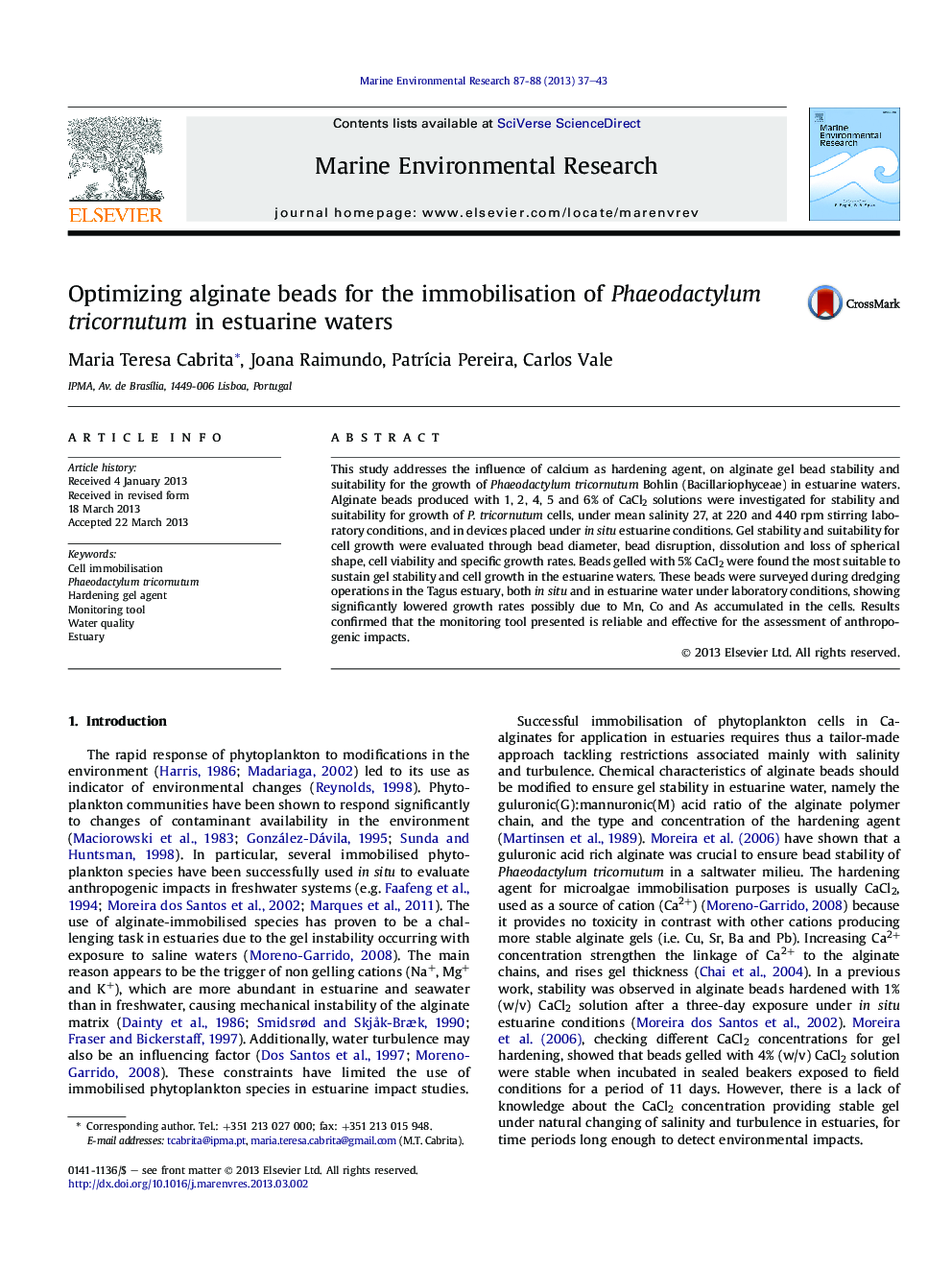| Article ID | Journal | Published Year | Pages | File Type |
|---|---|---|---|---|
| 4550911 | Marine Environmental Research | 2013 | 7 Pages |
•Optimization of alginate beads was performed for microalgae immobilisation in estuaries.•An exposure device to detect changes in pollutants in the environment was provided.•5% CaCl2 gelled beads were the most stable and suitable for cell growth.•Decrease in immobilised P. tricornutum growth was related to Mn, Co and As in the cells.
This study addresses the influence of calcium as hardening agent, on alginate gel bead stability and suitability for the growth of Phaeodactylum tricornutum Bohlin (Bacillariophyceae) in estuarine waters. Alginate beads produced with 1, 2, 4, 5 and 6% of CaCl2 solutions were investigated for stability and suitability for growth of P. tricornutum cells, under mean salinity 27, at 220 and 440 rpm stirring laboratory conditions, and in devices placed under in situ estuarine conditions. Gel stability and suitability for cell growth were evaluated through bead diameter, bead disruption, dissolution and loss of spherical shape, cell viability and specific growth rates. Beads gelled with 5% CaCl2 were found the most suitable to sustain gel stability and cell growth in the estuarine waters. These beads were surveyed during dredging operations in the Tagus estuary, both in situ and in estuarine water under laboratory conditions, showing significantly lowered growth rates possibly due to Mn, Co and As accumulated in the cells. Results confirmed that the monitoring tool presented is reliable and effective for the assessment of anthropogenic impacts.
Graphical abstractFigure optionsDownload full-size imageDownload as PowerPoint slide
